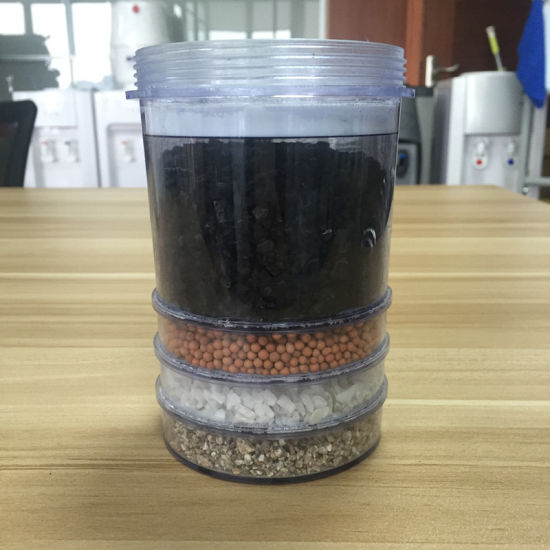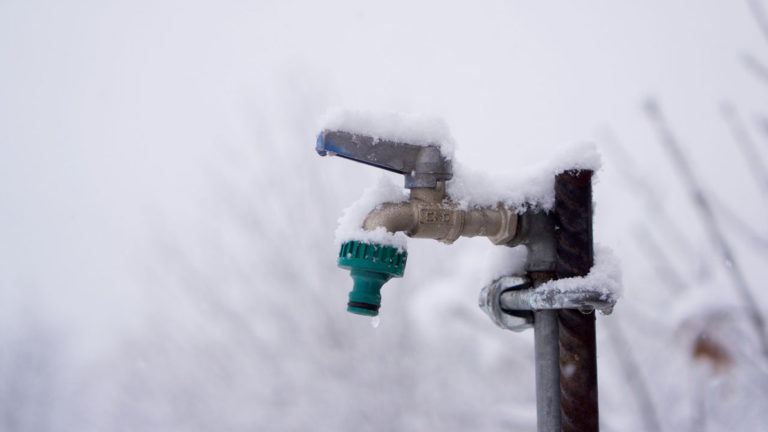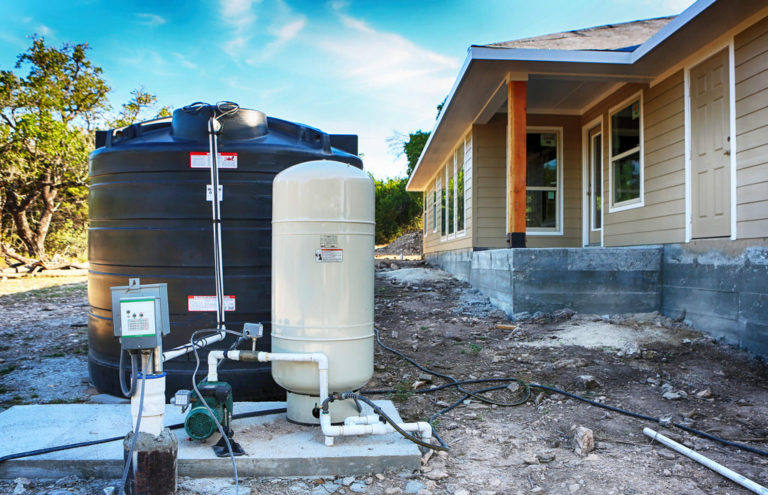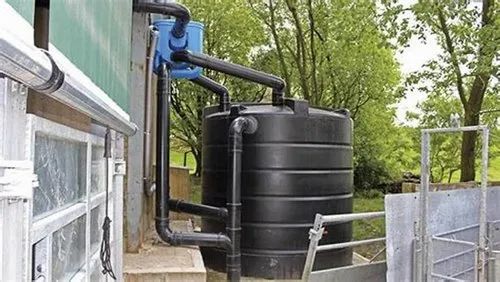Building your own off-grid water filtration system can be a cost-effective and empowering solution to accessing clean drinking water.
With the right materials and some simple steps, you can create a customized system that fits your needs and budget.
Whether you’re looking to purify well water, rainwater, or lake water, this DIY approach offers flexibility and control over the filtration process.
By investing time and effort in building your own off-grid water filtration system, you can enjoy reliable access to clean drinking water while also reducing your carbon footprint and dependence on public utilities.
Understand Your Water Source
Before you can build a water filtration system, you need to know the source of your water. This could be a well, a river, or a lake. It’s important to test the water quality to determine what kind of contaminants you need to remove.
This could be a well, a river, or a lake.
Once you have determined the source of your water, you need to test the water quality to determine what kind of contaminants you need to remove.
This is an essential step in the process, as different sources of water may contain different types and levels of contaminants.
For example, water from a well may contain higher levels of bacteria and viruses, while water from a river may contain higher levels of sediment and heavy metals.
Testing the water quality will help you determine the type of filtration system you need to build.
Depending on the source of your water and the level of contaminants present, you may need to use a variety of filters, such as activated carbon, reverse osmosis, or ultraviolet light.
You may need to consider the pH level of your water, as some filtration systems may not be effective in certain pH ranges.
This information will help you determine the type of filtration system you need and ensure that it is effective in removing contaminants and providing safe drinking water.
Choose the Right Filters
There are many types of water filters available, and you’ll need to choose the right ones for your specific needs. Sand filters, carbon filters, and reverse osmosis filters are all effective options.
Choosing the right water filter for your specific needs can be a daunting task, but by understanding the different types of water filters available, you can make an informed decision.
Sand filters are a popular option for removing sediment and impurities from water, while carbon filters are effective at reducing chlorine and other chemicals.
Reverse osmosis filters, on the other hand, use a semi-permeable membrane to remove impurities and contaminants, resulting in clean and refreshing drinking water.
When selecting a water filter, it’s essential to consider your specific needs and choose the filter that best fits your requirements.
For example, if you have a well or a private water source, a carbon filter may be sufficient to remove impurities, while a reverse osmosis filter may be necessary if your water contains high levels of dissolved solids.
By considering your specific needs and choosing the right water filter, you can ensure that your drinking water is safe, clean, and healthy for your entire family.
Use a Pre-Filter
A pre-filter can help remove larger particles and sediment from your water, which can extend the life of your main filters. You can use a simple sponge or a more complex pre-filter depending on your needs.
Using a pre-filter before your main filters can significantly extend their lifespan and improve the overall efficiency of your water filtration system.
Pre-filters are designed to remove larger particles and sediment from the water, which can clog and damage your main filters if left unchecked.
By removing these larger particles, your main filters are able to focus on removing smaller contaminants and impurities, such as bacteria and viruses, which can improve the taste, odor, and overall quality of your drinking water.
Pre-filters can help to prevent the buildup of sediment and scale within your main filters, which can reduce their effectiveness and lifespan.
There are a variety of pre-filter options available, ranging from simple sponges to more complex cartridges and sediment filters.
Depending on your specific needs and the type of water you are filtering, you can choose the pre-filter that best fits your system and budget.
For example, if you are filtering river water or well water, a more complex pre-filter may be necessary to remove larger particles and sediment.
However, if you are filtering city water, a simple sponge pre-filter may be sufficient.
Regardless of the type of pre-filter you choose, it is important to regularly clean and maintain it to ensure optimal performance and lifespan.
Build Your Own Filtration System
You can build your own filtration system using plastic bottles, pipes, and fittings. There are many tutorials online that can help you design and build your system.
To build your own filtration system, you can use plastic bottles, pipes, and fittings to create a customized setup that meets your specific needs.
Start by selecting the appropriate bottles and pipes based on the size and flow rate you require.
You can use larger bottles for more extensive filtration or smaller ones for smaller setups.
Use T-connectors and elbow connectors to create a network of pipes that allow water to flow through the bottles and filter out impurities.
You can also incorporate additional filters, such as activated carbon or ceramic elements, to further purify the water.
There are many tutorials available online that can guide you through the design and building process, providing you with the knowledge and tools you need to create a high-quality filtration system.
Use a Ceramic Water Filter
Ceramic water filters are effective at removing bacteria, viruses, and other contaminants from your water. These filters are made from clay and can be built yourself or purchased online.
Ceramic water filters are a reliable and cost-effective solution for purifying water at home.
Made from clay, these filters are highly effective at removing bacteria, viruses, and other contaminants from your drinking water.
The best part is that you can either build one yourself using readily available materials or purchase one online from a reputable supplier.
With a ceramic water filter, you can enjoy peace of mind knowing that your water is safe to drink, free from harmful pathogens and impurities.
Plus, these filters are easy to maintain and can last for a long time with proper care.
Whether you’re looking for a DIY project or a convenient solution for your household water needs, ceramic water filters are definitely worth considering.
Use a UV Filter
Ultraviolet (UV) filters can be used to kill bacteria and viruses in your water. These filters use UV light to damage the DNA of these microorganisms, making them harmless.
Ultraviolet (UV) filters are a highly effective method for purifying your water by killing harmful bacteria and viruses.
These filters utilize UV light to damage the DNA of these microorganisms, rendering them harmless and incapable of causing illness.
The UV light is specifically designed to target the DNA of these microorganisms, causing a double-strand break in their genetic material.
This break in their DNA prevents the microorganisms from replicating and causes them to die, effectively eliminating them from your water supply.
The use of UV filters is particularly beneficial in situations where traditional disinfection methods, such as chlorination, are not effective or practical.
UV filters do not introduce any harmful chemicals into your water, making them a safe and eco-friendly solution for water purification.
Install a Pressurized System
If you need a more powerful filtration system, you can install a pressurized system that uses a pump to push water through the filters. This type of system is more expensive, but it can provide cleaner water than a gravity-fed system.
If you’re looking for a more powerful filtration system to provide cleaner water, consider investing in a pressurized system that utilizes a pump to push water through the filters.
While this type of system is more expensive than a gravity-fed system, it offers superior cleaning power and can remove a wider range of contaminants.
By employing a pump to pressurize the water, this system is capable of filtering out smaller particles and more persistent contaminants, such as viruses, bacteria, and heavy metals.
Pressurized systems often come with multiple filters, including activated carbon and UV, which work together to provide comprehensive cleaning and disinfection.
While upfront costs may be higher, the peace of mind and improved water quality that comes with a pressurized system make it a worthwhile investment for those who prioritize clean drinking water.
Maintain Your System
It’s important to maintain your water filtration system regularly to ensure it continues to work effectively. You should replace the filters as needed and clean the system to prevent bacteria and other contaminants from growing. With regular maintenance, your DIY water filtration system can provide clean and safe drinking water for years to come.
To ensure the longevity and effectiveness of your DIY water filtration system, regular maintenance is important.
One of the most important components of maintenance is replacing the filters as needed.
Over time, the filters can become clogged with impurities and lose their ability to effectively remove contaminants from your water.
By regularly replacing the filters, you can ensure that your system continues to remove impurities and provide clean drinking water.
In addition to replacing the filters, it is also important to clean your water filtration system regularly to prevent the growth of bacteria and other contaminants.
This can be done by rinsing the system with clean water and checking for any signs of damage or wear.
By regularly cleaning and maintaining your system, you can prevent the buildup of bacteria and other contaminants, which can pose health risks if consumed.
Regular maintenance can also help to extend the life of your DIY water filtration system.
By keeping the system clean and functioning properly, you can prevent the need for costly repairs or replacements.
With regular maintenance, your system can continue to provide clean and safe drinking water for years to come.
Want More? Dive Deeper Here!
Hey there! If you’re the type who loves going down the rabbit hole of information (like we do), you’re in the right spot. We’ve pulled together some cool reads and resources that dive a bit deeper into the stuff we chat about on our site. Whether you’re just killing time or super into the topic, these picks might just be what you’re looking for. Happy reading!






